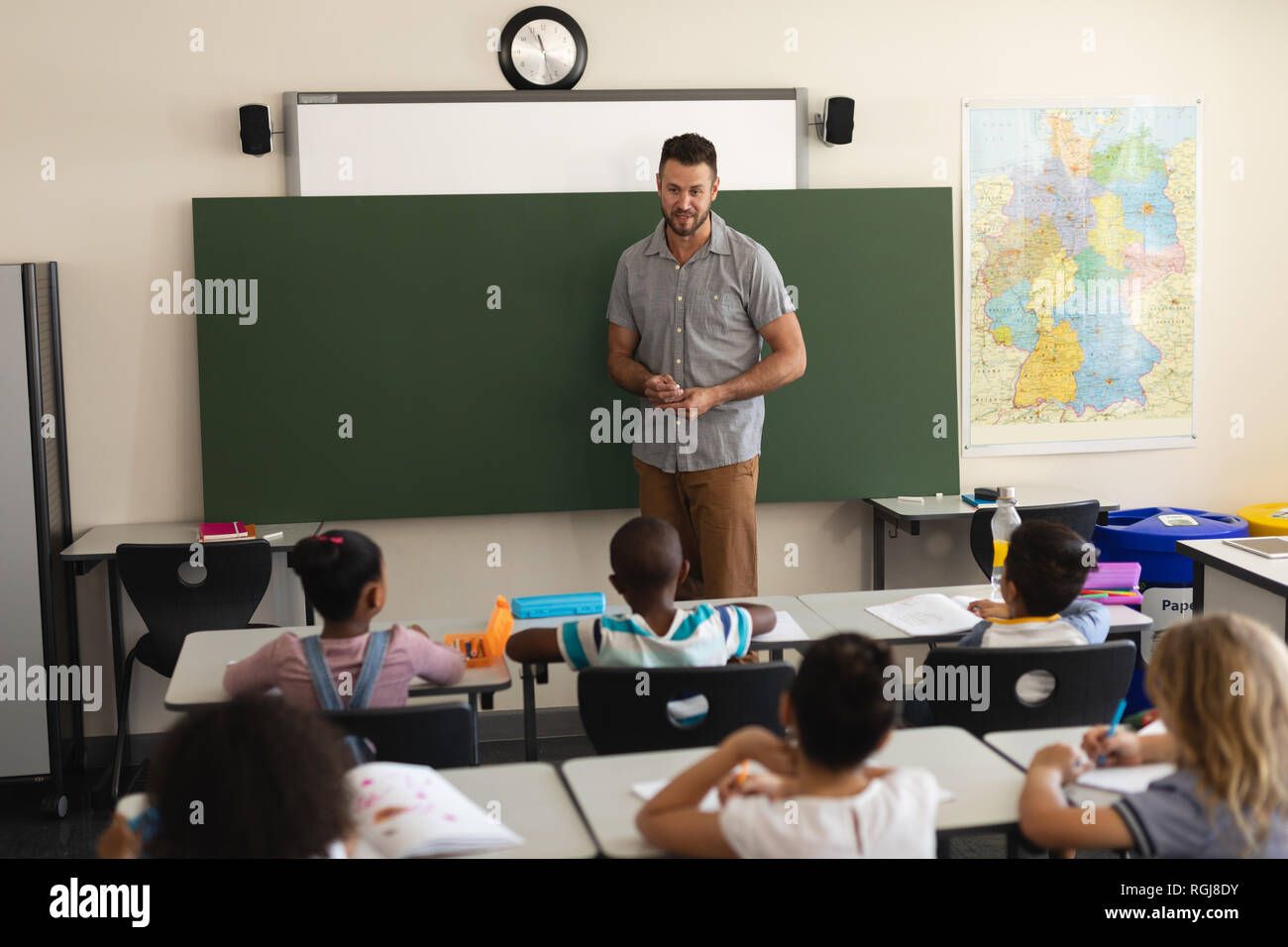Exploring the Various Training Methods in Main Scientific Research Education And Learning Today
Inquiry-based learning, hands-on experiments, and the assimilation of modern technology are redefining exactly how teachers involve young minds. Additionally, collaborative methods and set apart guideline are being used to provide to the diverse requirements of students, improving both interaction and understanding.
Inquiry-Based Discovering
Inquiry-Based Understanding (IBL) is an instructional method that urges trainees to discover clinical ideas through doubting, examination, and hands-on trial and error. This method highlights the function of pupils as energetic participants in their learning, advertising critical reasoning and problem-solving abilities. By engaging with real-world questions, students end up being curious and inspired, which boosts their understanding of clinical principles.
In IBL, educators work as facilitators, guiding trainees as they navigate their inquiries instead of delivering information straight. This student-centered method enables differentiation, suiting numerous discovering styles and paces. Pupils create skills in creating hypotheses, creating experiments, and analyzing data, which are crucial for scientific literacy.
Additionally, IBL fosters collaboration amongst pupils, encouraging them to share ideas and findings. This cumulative questions advertises social skills and a sense of neighborhood within the classroom. Additionally, the process of query motivates resilience, as students find out to embrace failing as a tipping stone toward understanding.
Hands-On Experiments
Hands-on experiments are an essential part of reliable science education and learning, enhancing the principles of inquiry-based learning. These experiments permit students to engage straight with scientific principles, fostering a much deeper understanding with experiential learning. By adjusting products and observing results, young students can comprehend abstract theories in substantial means.
Such activities advertise essential reasoning and analytical skills, as trainees assume results, conduct experiments, and evaluate outcomes. This process motivates them to ask inquiries, refine their understanding, and create a scientific frame of mind. Hands-on experiments can be tailored to varied learning styles, making sure that all students have the possibility to involve meaningfully with the content.
Additionally, hands-on experiments typically encourage partnership among peers, promoting teamwork and interaction skills. Working in groups allows students to share ideas, discuss searchings for, and find out from each other, which improves their total academic experience.
Incorporating hands-on experiments into the primary science curriculum not just improves the finding out atmosphere but also grows a long-lasting rate of interest in science. By proactively participating in their education and learning, trainees are most likely to establish an interest for scientific query that extends past the classroom.

Innovation Combination
Incorporating modern technology into primary science education has become increasingly vital in promoting student engagement and improving discovering results. The usage of digital tools, such as interactive simulations, online labs, and educational software application, offers pupils with chances to check out scientific concepts in cutting-edge ways. These sources promote a much deeper understanding of complex topics by allowing students to envision and control variables that would certainly be unwise in a conventional classroom setup.
In addition, technology assimilation motivates personalized finding out experiences. Pupils can proceed at their own rate, taking another look at this post tough principles via multimedia resources, which satisfy various knowing styles. This adaptability not just supports individual development but also grows a sense of freedom in learners.
In addition, modern technology functions as a bridge to real-world science, connecting pupils with present research study and professional contributions. Accessibility to clinical journals and on-line data sources widens students' point of views on clinical questions and fosters crucial believing skills.
Collaborative Discovering
Joint discovering plays a crucial duty in main scientific research education and learning by promoting teamwork and communication skills amongst students. This method urges learners to work with each other, share understanding, and participate in analytical, which enhances their understanding of scientific principles. By joining team tasks, pupils learn to articulate their ideas, listen to diverse viewpoints, and work out remedies, every one of which are vital skills in both real-world and academic contexts.

Study suggests that joint discovering can cause enhanced inspiration and engagement in science topics, as trainees locate pleasure in common experiences (primary science tuition Singapore). Furthermore, this strategy prepares trainees for future collective undertakings, outfitting them with the skills needed for effective team effort in college and specialist environments. Eventually, accepting joint knowing in key scientific research education can dramatically improve the learning experience and promote a much deeper understanding of clinical questions
Set Apart Instruction

Separated instruction can materialize in various methods, such as varying the web content, processes, or items of learning. As an example, teachers may utilize tiered assignments that provide differing degrees of intricacy, permitting pupils to operate at their corresponding preparedness levels. In addition, versatile grouping techniques can facilitate collaboration amongst trainees with different abilities, cultivating peer discovering.
Evaluation plays a critical duty in this method, as it informs guideline and helps educators recognize each trainee's unique requirements. Formative analyses, such as quizzes and monitorings, can direct educators in readjusting their methods to boost learning end results. primary science tuition Singapore. Inevitably, by executing distinguished guideline in key science education and learning, teachers can grow a more reliable and fair knowing setting, empowering all trainees to reach their full capacity in understanding clinical phenomena
Verdict
In summary, the diverse training methods in main science education, consisting of inquiry-based understanding, hands-on experiments, technology assimilation, joint knowing, and differentiated instruction, collectively add to a more efficient discovering setting. These methods promote important thinking, analytical abilities, and a much deeper understanding of clinical ideas. By applying these strategies, educators can create helpful and appealing classrooms that attend to the different demands of trainees, inevitably promoting a long-lasting rate of interest in science and improving academic accomplishment.
Inquiry-Based Discovering (IBL) is a pedagogical method that encourages students to discover clinical concepts via questioning, investigation, and hands-on trial and error.Collaborative learning plays a vital function in primary scientific research education and learning by cultivating synergy and communication their explanation skills among trainees.Study shows that collective knowing can lead to increased inspiration and engagement in scientific research topics, as students locate satisfaction in common experiences.In cultivating an inclusive learning atmosphere, set apart guideline emerges as a key method to fit the varied needs and capacities of trainees in key science education and learning. Ultimately, by carrying out distinguished guideline in main scientific research education, teachers can grow an extra effective and equitable learning atmosphere, encouraging all pupils to reach their full capacity in understanding clinical sensations.
 Mr. T Then & Now!
Mr. T Then & Now! Anthony Michael Hall Then & Now!
Anthony Michael Hall Then & Now! Tahj Mowry Then & Now!
Tahj Mowry Then & Now! Michael Fishman Then & Now!
Michael Fishman Then & Now! Barbara Eden Then & Now!
Barbara Eden Then & Now!